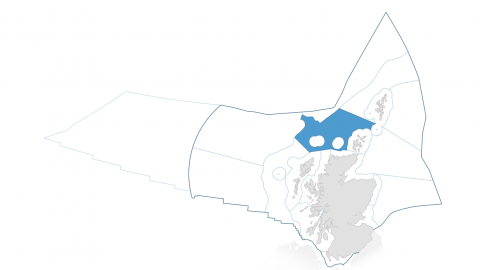The tables in this section reflect the output of the workshop (October 2019) when the pressures from human activities were assessed for the period 2014 to 2018 for the region. The summary text below the tables elaborates on some of the points that were made at the workshop.
This pressure assessment uses the FeAST classification which includes two abrasion pressures: surface abrasion & sub-surface abrasion. Some expert groups combined these as a single pressure "surface & sub-surface abrasion" whilst others focussed on using surface abrasion alone, hence there is a slight difference in handling for some regions.
The ranking of the pressures in terms of impact is a relative exercise within each region, and is not a statement of their absolute impact. Detailed comparison between regions on the basis of these relative pressure assessments is therefore not advisable.

Main pressures identified
| Priority [1] | Pressure (FeAST classification) [2] | Main healthy and biologically diverse components affected [3] | Main contributing FeAST activity /activities to pressure [4] | Associated productive assessments [5] |
|---|---|---|---|---|
| 1 | Removal of target species (including lethal) |
|
||
| 2 | Removal of non-target species (including lethal) |
|
||
| 3 | Underwater noise |
|
||
| 4 | Physical change (to another seabed type) |
|
||
| 5 | Death or injury by collision below water |
|
Other pressures identified
Footnote: the ordering of entries is alphabetical and there is no prioritisation between the pressures.
Summary from workshop
Pressures associated with commercial fishing for this region are similar to those acting on the Hebrides Shelf region. However, additional pressures on the North Scotland Shelf are identified to arise from offshore oil and gas installations, and associated shipping, giving rise to the greater prominence of the pressures of underwater noise (also associated with military activity), physical change, and collision risks. Noise generated by seismic surveys is considered infrequent. Large oceangoing cruise ships will produce considerable amounts of low-frequency noise but are also relatively infrequent. Impacts on other marine receptors (fish, invertebrates) largely unknown due to lack of scientific data. Non-synthetic compound contamination from offshore oil and gas has not exerted significant pressure to date.
1 Removal of target species (lethal), and;
2 Removal of non-target species.
These two pressures relate to: bottom otter trawling and pair trawls; demersal seine netting; line fishing (mechanized longlining); trawling and purse seining; scallop dredging.
3 Underwater Noise: military sonar and surface activity; shipping and seismic surveying.
4 Physical change (to another seabed type): bottom otter trawling and pair trawls. Offshore oil and gas installations relatively localised.
5 Death or injury to by collision below water: military (sea surface military activity); shipping (offshore oil and gas traffic).

